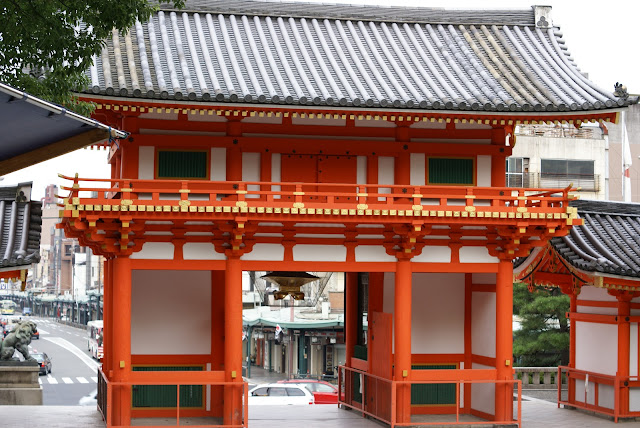It was a Mommys' Day Out for some friends and me! Right now, our deployed hubbies are cruising around Asia and stopping at exotic ports of call- sans children. Ok, fine, our husbands also work really really hard in between port calls, don't get a lot of sleep, and have to eat bad boat food. It's not all fun and games (so I hear). But it's easy to forget that while Skype-ing Mr. TF at his fancy Hong Kong hotel. After our chat, he gets to head out for a delicious dinner with adults, while I look down and realize that I have just accidentally cut my dinner into bite-size pieces instead of Little TF's. I hate it when I do that to my dinner. It means that toddlerhood is taking over my brain.
So! Instead of moping around, I decided to be proactive. Even if we couldn't budget a port call family vacation this time around, there are always reasonably priced MWR tours! I love my kid like crazy and I usually drag her with me on the tours; but, after a few months of constant Mommy duty, we are both ready for a change of pace. So my friend and I split a babysitter, booked an MWR day trip to Kyoto, and left this past Saturday at 3 am, secure in the knowledge that our children would safely be able to terrorize entertain someone else for the day!
Our tour's first stop was at Yasaka-jinja, which is also known as the Gion Shrine. Yasaka-jinja is where Kyoto's very, very famous Gion Matsuri festival takes place every July. Originally built in 656 AD (so...not very long ago), the shrine is dedicated to Susanoo, the brother of Amaterasu Omikami (the Sun Goddess), his wife, and eight children. Susanoo is somehow related to medicine, which is why the Gion Festival was created when Yasaka-jinja's chief priest paraded through the city, seeking divine relief from a vicious plague.
The shrine's entrance and torii gates are painted a brilliant shade of vermillion- also known as "Kyoto red"- which made taking photos a enormous pleasure!
Inside the shrine complex are smaller shrines to other Shinto kami, as well as the shrine's main buildings. As luck would have it, while we admired the ancient halls and gates, we stumbled upon a beautiful, morning wedding!
 |
| Such a cute couple |
It's not a Very Important Japanese Event without a photographer. In this case, there were two photographers, lugging at least four, massive cameras between them. Then our tour group arrived, and this poor couple had to smile for about 30 more cameras. I justify my voyeurism by remembering the hundreds of photos and video of a blonde, blue-eyed Little TF that are scattered across mainland Japan. Sorry, cute wedding couple. Japan takes a bazillion photos of my stereotypically Caucasian kid, so I take photos of Japan!
These elegant women are perhaps the mothers of the cute couple. They are wearing black kimono with patterned hems and five white crests (three on the back, two on the front), which are the highest of ceremonial kimono. They are worn at weddings by female relatives of the bride, whose relationship to the bride is the most socially important.
In this photo, please note that the men are fully outfitted in morning suits. Morning suits. Welcome to Japan, where Western clothing conventions are observed even more strictly than they are in the West.
As we snapped photos of the wedding, a miko, or Shrine Maiden, passed by. Our tour guide informed us that she was helping with preparations for the shrine's otsukimi event. Historically, miko were once considered to be shamans, but their role is now more institutionalized. I often see miko selling a shrine's good luck charms or painting calligraphy onto tourists' shrine books. Miko's modern duties also include performing traditional dances and telling fortunes.
 |
| The omikuji at Yasaka Shrine were tied onto trees that lined one of the paths. |
Of course, one of the best features of Yasaka-jinga/Gion Shrine, is its location- Gion. Those of you who have read Arthur Golden's famous Memoirs of a Geisha probably recognize the name. Gion is the most famous home of those female artists that the West still insists on exotifying and misunderstanding.
To be continued...
| To get to Yasaka Shrine, Japan-guide.com recommends these routes: Yasaka Shrine can be reached by bus from Kyoto Station in about 20 minutes. Take number 100 or 206 and get off at Gion bus stop. The closest train stations are Gion Shijo Station on the Keihan Line and Kawaramachi Station on the Hankyu Line.Alternatively, the 20-30 minute walk from Kiyomizudera through the narrow lanes of the Higashiyama District to Yasaka Shrine is highly recommended. Disclaimer: I do my best to make sure all my information is accurate. However, details may change or I may just be flat-out wrong. Please let me know if something needs a correction. Thank-you! |

















No comments:
Post a Comment